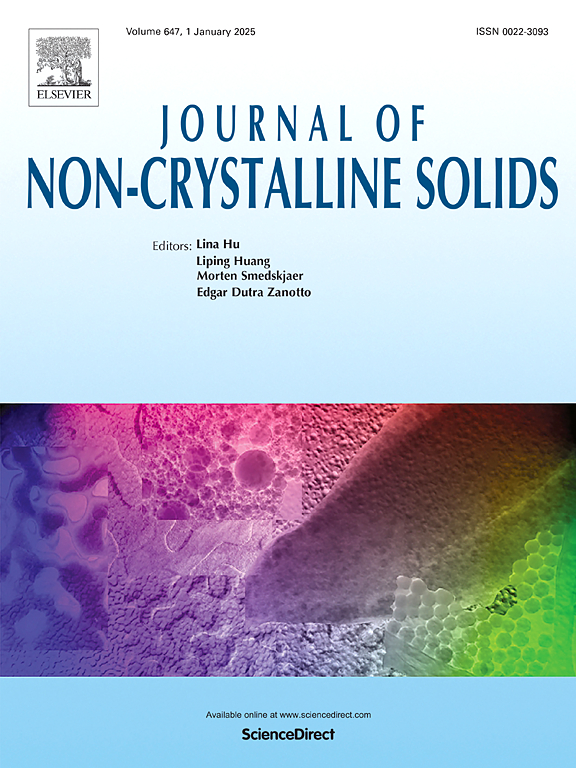二氧化硅玻璃辐射诱导氧相关缺陷的电子结构和光学性质的第一性原理计算
IF 3.2
3区 材料科学
Q1 MATERIALS SCIENCE, CERAMICS
引用次数: 0
摘要
长时间暴露在辐射环境中会导致光学性能的退化,严重影响光学系统的性能。本研究通过第一性原理计算系统地研究了氧相关辐射缺陷。主要有两种缺陷类型:一种是由一个自由基氧原子和一个硅三配位原子组成的非桥接氧缺陷,这种缺陷是由Si-O键在辐照下断裂形成的;另一种是由两个相邻的硅三配位原子组成的氧空位缺陷,这种缺陷是由高能粒子的氧置换形成的,它们随后可能转变为E'色心。系统地研究了原始的90原子硅玻璃模型和辐照过程中可能产生的缺陷模型的电子结构和光学性质。计算表明,原始硅玻璃的带隙值提高到9.4 eV。缺陷模型在价带最大值附近和带隙中发现了几个新的占据和未占据缺陷态。随着缺陷相关原子之间距离的增加,价带最大值从最高占据态能级移开,而最低的未占据态移向更低的能量,导致吸收光谱中的红移。计算出的吸收峰位置与已发表的实验测量结果非常吻合。本文章由计算机程序翻译,如有差异,请以英文原文为准。
First principles calculations of electronic structure and optical properties for radiation-induced oxygen related defects in silica glass
Prolonged exposure of silica glass to radiation environments leads to the degradation of optical properties, significantly compromising the performance of optical systems. This study systematically investigates oxygen-related radiation-induced defects through first-principles calculations. Two primary defect types are characterized: non-bridging oxygen defects comprising a radical oxygen atom and a triple-coordinated silicon atom formed by Si-O bond rupture under irradiation, and oxygen vacancy defects featuring two adjacent triple-coordinated silicon atoms created through oxygen displacement by high-energy particles, which may subsequently transform into E' color centers. The electronic structure and optical properties of both the pristine 90-atom silica glass model and the defect models that may arise during irradiation have been systematically investigated. Calculations show an improved band gap value of 9.4 eV for pristine silica glass. Several new occupied and unoccupied defect states are found near the valence band maximum and in the band gap from the defect models. As the distance between the defect-related atoms increases, the valence band maximum moves away from the highest occupied state energy level, while the lowest unoccupied state shifts to lower energies, leading to a red-shift in the absorption spectrum. The calculated absorption peak positions are found to closely match the published experimental measurements.
求助全文
通过发布文献求助,成功后即可免费获取论文全文。
去求助
来源期刊

Journal of Non-crystalline Solids
工程技术-材料科学:硅酸盐
CiteScore
6.50
自引率
11.40%
发文量
576
审稿时长
35 days
期刊介绍:
The Journal of Non-Crystalline Solids publishes review articles, research papers, and Letters to the Editor on amorphous and glassy materials, including inorganic, organic, polymeric, hybrid and metallic systems. Papers on partially glassy materials, such as glass-ceramics and glass-matrix composites, and papers involving the liquid state are also included in so far as the properties of the liquid are relevant for the formation of the solid.
In all cases the papers must demonstrate both novelty and importance to the field, by way of significant advances in understanding or application of non-crystalline solids; in the case of Letters, a compelling case must also be made for expedited handling.
 求助内容:
求助内容: 应助结果提醒方式:
应助结果提醒方式:


